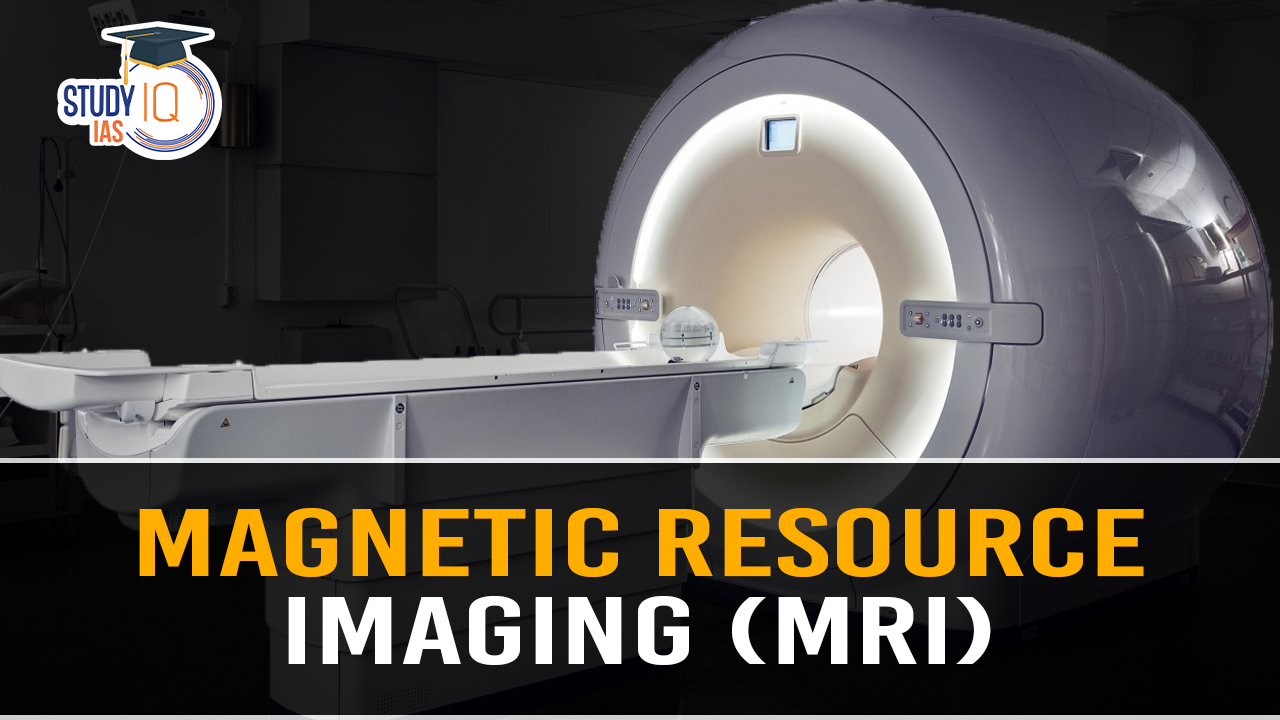Table of Contents
Context: A team at the University of Hong Kong, led by Ed Wu, has developed a low-cost MRI scanner that could significantly improve access to this crucial diagnostic tool, particularly in low- and middle-income countries.
About the Discovery of low-cost MRI Scanner
- Cost Reduction: The new scanner costs around $22,000 (Rs 18.4 lakh), making it about 50 times cheaper than conventional 3-T MRI machines that can cost up to Rs 13 crore.
- Simplified Design: The machine uses 0.05 T magnets, eliminating the need for shielded rooms and helium coolant. It can be plugged into standard wall outlets.
- AI-Enhanced Imaging: A deep-learning algorithm compensates for the lower resolution of 0.05 T magnets by reducing noise and sharpening images.
- Proven Efficacy: The scanner produced clear images of various organs and tissues in 30 healthy volunteers, comparable to those from 3-T machines.
Magnetic Resource Imaging (MRI): An Overview
What is it?
- MRI is a non-invasive imaging technique used to visualise soft tissues within the body (brain, muscles, organs, etc.).
- It’s vital for diagnosing and monitoring cancer, neurological conditions, and more.
How does it work?
- MRI utilises the magnetic properties of hydrogen atoms in the body to create detailed images of soft tissues.
- The machine consists of a superconducting magnet, a device emitting radiofrequency pulses, and a detector.
- Hydrogen atoms align with the magnetic field
- Radio pulses excite these atoms, and their energy emission upon returning to a lower energy state is detected to form images.
| Facts |
|
Pros of MRI
- MRI is non-invasive and capable of imaging various body parts including the brain, cardiovascular system, and joints.
- It is particularly useful for diagnosing conditions like cancer and neurological disorders.
- The machine can produce detailed images from multiple angles without requiring patient movement, using gradient magnets.
- MRI exploits differences in T1 relaxation times of hydrogen in water across different tissues, enhanced by contrast agents for clearer imaging.
- It is considered safe as the magnetic fields do not have long-term effects on the body, although effects on pregnant women are less studied.
Cons of MRI
- High costs: MRI machines are expensive, ranging from tens of lakhs to crores of rupees, making scans costly (often over ₹10,000 each in India).
- Physical discomfort and potential issues for claustrophobic patients due to the need to remain still in a confined space during the scan.
- Maintenance and operational costs are high due to the energy-intensive process needed to generate and maintain the strong magnetic fields.
Advantages of the Low-Cost MRI Scanner
- Accessibility and Cost: Drastically reduces the financial barrier to medical imaging, particularly beneficial in low- and middle-income countries.
- For instance: Conventional MRI scans can cost Rs 7,000-15,000, with waiting times of several months for cheaper options.
- Portability and Ease of Use: Lightweight and portable, requiring no special power sources, which makes it suitable for remote or underserved areas.
- Safety and Usability: Generates less noise, which could be advantageous when scanning children, and poses less risk of attracting metal objects, reducing accidents commonly associated with high-field MRI scanners.
Medical and Emergency Applications
- Immediate Medical Assessment: Useful in emergencies for quick diagnostics to aid first responders and in traumatic accidents to assess injuries on-site.
- Compatibility with Metal Implants: Produces fewer artefacts from metal implants, potentially leading to better diagnosis and less risk during scans.
Limitations and Ongoing Development
- Resolution and Utility: While low-field magnets do not provide the same resolution as high-field magnets, they are still valuable in certain contexts.
- Further Testing Needed: The necessity for additional testing in other centres to validate the findings and explore the compatibility with devices like pacemakers.
Potential Impact and Future Prospects
- Complementary Use: Can complement existing high-field MRI machines in radiology departments, offering a balance between cost and functionality.
- Healthcare Accessibility: Could revolutionise healthcare delivery by making essential diagnostic tools more accessible and affordable.


 Utkal Divas 2025: Odisha Foundation Day ...
Utkal Divas 2025: Odisha Foundation Day ...
 NASA Parker Solar Probe Flies Closer to ...
NASA Parker Solar Probe Flies Closer to ...
 List of Military Exercises of India 2024...
List of Military Exercises of India 2024...





















